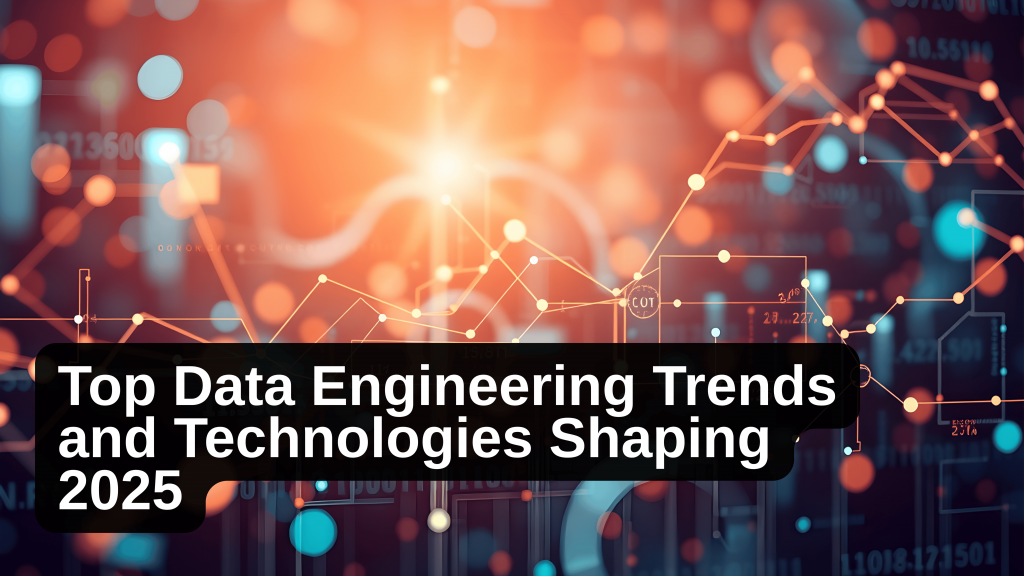Introduction
Data engineering has evolved from simple ETL (Extract, Transform, Load) jobs to an advanced ecosystem of cloud-native pipelines, real-time analytics, and AI-driven automation. As data becomes the backbone of digital transformation, new tools and technologies are redefining how organizations collect, process, and leverage information.
This post explores the biggest data engineering trends and technologies of 2025 that every tech team and data professional should keep an eye on.
1. Rise of Real-Time Data Pipelines
Batch processing is no longer enough. Businesses now demand real-time insights to make instant decisions. Tools like Apache Kafka, Flink, and Spark Structured Streaming are leading the way, enabling continuous data ingestion and analysis from multiple sources.
Trend Insight:
Real-time architecture is becoming the new standard, especially for fintech, e-commerce, and IoT-driven industries.
2. DataOps and Automation Take Center Stage
DataOps, often called the DevOps for data, focuses on streamlining data workflows through automation and collaboration. Platforms such as Airflow, Prefect, and Dagster are helping engineers manage complex data pipelines with better reliability, scalability, and visibility.
Trend Insight:
Expect tighter integration between DataOps tools and cloud services for continuous data delivery, monitoring, and governance.
3. Cloud-Native Data Engineering Dominates
The shift from on-premise to cloud data ecosystems is nearly complete. Platforms like Snowflake, Databricks, BigQuery, and Redshift are at the forefront, offering scalability, flexibility, and cost efficiency for data-heavy operations.
Trend Insight:
Multi-cloud strategies are gaining momentum as organizations seek to reduce vendor lock-in and take advantage of best-in-class cloud tools.
4. The Rise of Data Lakehouses
Data lakehouses combine the flexibility of data lakes with the structured reliability of data warehouses. Platforms such as Delta Lake, Iceberg, and Hudi allow teams to unify structured and unstructured data while maintaining ACID compliance.
Trend Insight:
In 2025, data lakehouses will continue to be the preferred architecture for advanced analytics and AI model training.
5. AI-Driven Data Engineering
Artificial Intelligence is no longer just consuming data, it’s transforming how it’s engineered. AI-powered tools like Tecton, DataRobot, and Google Vertex AI are automating repetitive data engineering tasks such as schema mapping, anomaly detection, and performance optimization.
Trend Insight:
Expect AI-assisted modeling and self-healing pipelines to become standard practices, reducing manual workloads and improving efficiency.
6. Stronger Focus on Data Governance and Quality
With increasing regulatory pressures and data complexity, organizations are doubling down on data governance and observability. Tools like Great Expectations, Monte Carlo, and Collibra help ensure that data remains reliable, compliant, and auditable across systems.
Trend Insight:
Continuous data quality monitoring is replacing manual audits, ensuring data trustworthiness across every stage of the pipeline.
Conclusion
The data engineering landscape of 2025 is fast, automated, and intelligent. From real-time pipelines to AI-powered data governance, the role of data engineers has become more critical than ever.
Staying ahead means adopting tools that not only scale but also empower teams to innovate with confidence.



